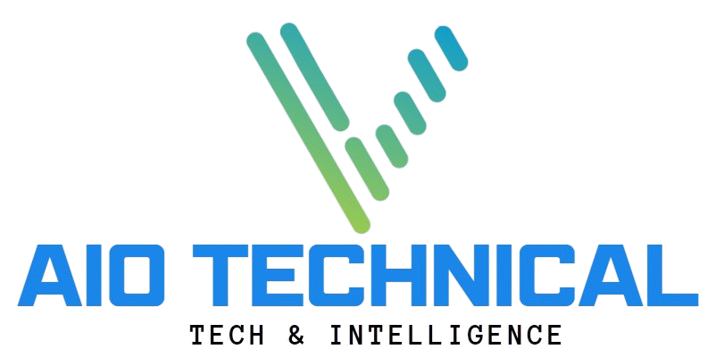Navigating Prescription : Safe and Effective Medication Management

Navigating prescription medication is a critical aspect of healthcare that requires attention to detail, thorough understanding, and active patient participation. In today’s healthcare system, the process of managing prescriptions goes beyond simply issuing a medication; it involves careful consideration of a patient’s medical history, lifestyle, and the specific needs of their condition. With a wide array of medications available, it’s essential to ensure that the prescriptions are both effective and safe.
This article explores the various aspects of it medication, focusing on best practices for healthcare providers, the importance of patient education, legal considerations, and the integration of modern technologies. By the end of this guide, you will have a comprehensive understanding of how it plays a central role in achieving optimal health outcomes.
Understanding the Core of Navigating Prescription Medication
Table of Contents
ToggleIt refers to the process by which healthcare providers assess, prescribe, and monitor medications to ensure patients receive the most appropriate treatment for their conditions. This involves evaluating the risks and benefits of various treatment options and engaging in open communication with patients to ensure they understand their treatment plans.
The Need for Accurate Prescription Management
Accurate prescription management is essential for patient safety. A prescription that is miswritten or misunderstood can lead to serious health complications. The healthcare provider must evaluate various factors, such as the patient’s age, medical history, current medications, and potential allergies, before prescribing a medication. This personalized approach is critical to ensuring that the prescribed treatment is effective while minimizing the risk of side effects or adverse drug interactions.
The Role of Healthcare Providers in Navigating Prescription
Healthcare providers play an integral role in navigating prescriptions. Their responsibilities include assessing the patient’s health needs, selecting the appropriate medication, monitoring its effectiveness, and ensuring the patient understands how to take the medication properly.
Assessing Patient Needs: A Key Step in Navigating Prescription
Before prescribing medication, it’s essential that healthcare providers take a comprehensive medical history. This includes understanding previous prescriptions, allergies, ongoing health issues, and any other factors that might influence the treatment plan. For instance, certain medications may not be suitable for patients with kidney or liver issues, and dosage adjustments might be required for the elderly.
This assessment also involves determining whether the prescribed medication aligns with the patient’s preferences, lifestyle, and other health conditions. By thoroughly evaluating these factors, healthcare providers can ensure that the prescribed medication is both safe and effective.
Clear Communication and Shared Decision-Making
Effective communication between healthcare providers and patients is fundamental in navigating prescription medication. It’s important to explain the purpose of the medication, how it should be taken, and the potential side effects. Providers should also encourage patients to ask questions and voice any concerns they may have regarding the prescribed medication.
One of the key elements of shared decision-making is understanding the patient’s preferences. Some patients may prefer a particular form of medication, such as a pill or liquid, or they may have concerns about certain side effects. By addressing these concerns upfront, healthcare providers can ensure that the patient is more likely to adhere to the treatment plan, leading to better health outcomes.
Best Practices for Navigating Prescription Safely
Navigating prescription medication safely involves following certain best practices to reduce risks and ensure the patient’s well-being throughout the treatment process. These practices are essential for healthcare providers and patients alike.
Medication Reconciliation: The First Step in Safe Prescription Management
One of the most important practices in it is medication reconciliation. This process involves reviewing all medications a patient is taking—prescription, over-the-counter, and even supplements—before issuing new prescriptions. Medication reconciliation ensures that there are no conflicts between medications and that the patient is not exposed to dangerous drug interactions.
For instance, certain medications, like blood thinners, may interact negatively with other drugs, increasing the risk of bleeding or clotting. By reconciling medications, healthcare providers can identify and mitigate these risks before they become a serious issue.
Educating Patients About Their Medications
Patient education plays a vital role in navigating prescriptions. Educating patients on how to take their medications, what to expect, and how to handle side effects can prevent non-adherence and improve health outcomes.
Healthcare providers should provide clear, simple instructions for medication use. This includes specifying the correct dosage, timing, and whether the medication should be taken with food or water. In addition, providers should explain the potential side effects and guide the patient on what to do if they experience any problems.
For example, some medications may cause drowsiness or dizziness. It’s important for patients to know these side effects in advance so they can take precautions, such as avoiding driving or operating machinery if they feel drowsy.
Monitoring the Effectiveness of Prescribed Medications
Prescribing a medication is only the first step in the journey of navigating prescriptions. Healthcare providers must follow up with patients to monitor the medication’s effectiveness and any potential side effects. Regular check-ins ensure that the treatment is working as expected and provide an opportunity for adjustments if needed.
For example, if a patient is prescribed an antidepressant, the provider will monitor the patient’s response to the medication, checking for any side effects such as changes in mood, appetite, or sleep patterns. If necessary, the dosage can be adjusted or an alternative medication can be prescribed.
The Legal Side of Navigating Prescription Medication
Navigating prescription medication also involves understanding and adhering to legal and regulatory guidelines. Healthcare providers must follow strict protocols to ensure prescriptions are legally valid and that medications are dispensed appropriately.
Understanding Controlled Substances
Certain medications, particularly those with high potential for abuse, are classified as controlled substances. Prescribing these medications requires adherence to strict legal guidelines to prevent misuse and ensure patient safety. Healthcare providers must be diligent in managing controlled substances, including keeping accurate records and following state and federal laws regarding their use.
For instance, opioids are heavily regulated due to the risk of addiction. Healthcare providers must evaluate the patient’s need for such medications carefully and consider alternative treatments whenever possible. In many cases, providers must also participate in prescription drug monitoring programs (PDMPs) to track the prescribing and dispensing of controlled substances.
Informed Consent: Ensuring Patient Understanding
Before prescribing certain medications, particularly those with significant risks or side effects, healthcare providers must obtain informed consent from the patient. This involves explaining the risks and benefits of the prescribed medication, ensuring the patient understands the potential side effects, and getting their agreement to proceed with the treatment.
Informed consent ensures that the patient is fully aware of the treatment plan and is actively involved in their healthcare decisions. This practice also protects both the patient and the healthcare provider in the event of complications or adverse reactions.
Technological Advances
In recent years, advancements in technology have played a crucial role in improving how prescriptions are managed. From electronic prescribing to artificial intelligence (AI), healthcare providers now have access to tools that can enhance the safety, efficiency, and accuracy of the prescription process.
Electronic Prescribing: Streamlining the Process
Electronic prescribing (e-prescribing) allows healthcare providers to send prescriptions directly to pharmacies, reducing the risk of errors caused by illegible handwriting or incorrect dosages. E-prescribing also streamlines the process by automatically checking for potential drug interactions and ensuring that medications are available at the pharmacy.
Additionally, e-prescribing systems can be integrated with electronic health records (EHRs), allowing healthcare providers to track the patient’s medication history and make more informed decisions about future prescriptions.
Artificial Intelligence: Personalizing Medication Plans
AI is becoming an increasingly important tool in navigating prescription medication. AI-powered platforms can analyze vast amounts of patient data, including genetic information, to help healthcare providers personalize medication plans. By tailoring prescriptions to the individual’s genetic makeup, lifestyle, and medical history, AI can help improve the effectiveness of treatment while minimizing side effects.
Conclusion: Best Practices for Navigating Prescription
Navigating prescription medication is a multi-faceted process that requires careful attention from both healthcare providers and patients. By following best practices such as medication reconciliation, patient education, and monitoring, healthcare providers can help ensure that prescriptions are both effective and safe. Legal guidelines, informed consent, and technological tools further enhance the prescription process, improving patient outcomes and reducing risks.
As healthcare continues to evolve, the importance of it with care and expertise will only grow. By staying informed, communicating effectively, and utilizing modern technologies, both patients and healthcare providers can work together to achieve the best possible health outcomes.
This article was prepared by the V Aiotechnical.com editorial team, dedicated to delivering high-quality, well-researched content for better healthcare practices and outcomes





